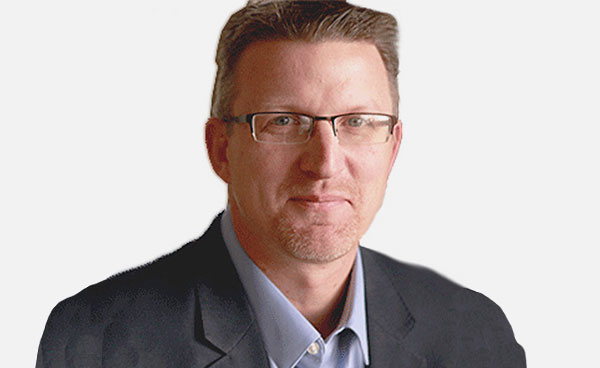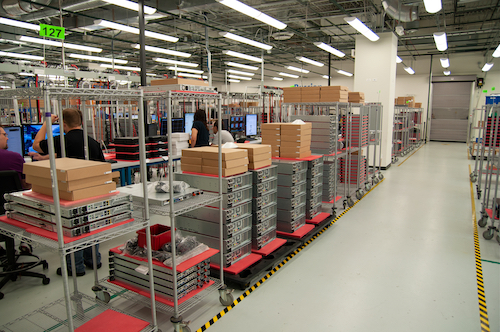
Back in 2008, many considered it the year of “convergence.” The year where IP-based surveillance cameras would overtake sales of analog systems. The physical security industry was obsessed with this “convergence” and how IP-based systems would become the norm by the end of that year. It would actually take until 2012 before more than 50% of all new physical security system sales would be IP-based.
In 2009, Tom Larson co-founded a business that would deliver physical security solutions based on I.T. technology (always interesting that our industry latched onto the phrase IP-based solutions – instead of IT-based solutions). The challenge with such new technologies, is that those individuals already in the industry have a hard time picking up new technologies.
Larson, a technical geek, has been in the industry in one way or another for 26 years. As is the case so many times, it helps to be in the right place at the right time. With the industry convergence underway, the old-guard technicians slow on the new tech, and Larson’s fascination with technology, he was able to put together physical security solutions that would actually work.
It is this decade of experience in architecting video surveillance solutions that have been designed to handle the demanding loads of video -lots of video- into a computer system that will hold up to the test of time.
What impact does a variable bit rate surveillance camera have on the video display card within the client workstation? How does hundreds of surveillance cameras writing 24/7 video data to hard disk systems impact the storage array? What are the impacts of such an infrastructure on the underlying network?
Larson took to these challenges like a Shetland Sheepdog keeping the flock corralled at sunset.
“I’ve worked on the full gamut of deployments -some of the largest projects in the world- from stadiums, to citywide and nationwide deployments, down to the smallest installations,” Larson shared. “When thinking about what’s really important, it’s not the size of the job but really about developing the most appropriate solution for everyone involved and having the ability to support the deployment throughout the entire lifecycle of the project.”
As the company’s customers grew in size and complexity, so did Larson’s technical insight and industry reputation. All of the largest players in the physical security market know Larson personally or minimally by his reputation.
Larson recently parted ways with the company he co-founded and was looking for his next adventure. Enter one company that was established in the 1990s, is ISO9001:2015 certified, and has built a significant infrastructure on I.T. hardware supply chain and order fulfillment. Enter MBX Systems.
“There is no one in the industry that looks at a project the way Tom does,” says Steve Serwa, Global Sales Manager – MBX Safety and Security. “He understands every facet of the job and what the COMPLETE hardware solution needs to be. He considers the needs and wants of the end-user, the goals and challenges of the integrator, and the role the software provider plays in the equation. He also knows what the market should be doing to support each of these stakeholders. Tom sees holes, problems, or opportunities before the market realizes there’s something there.”
MBX had a handful of customers in the physical security space and recognized that this is an industry that will always need to deploy solutions on hardware. It’s been MBX’s strategy to specialize in hardware design, configurations, and order fulfillment for vertical markets that aren’t likely to migrate to the cloud, like medical markets, simulation and training market, and now physical security. They’ve got a foothold in other verticals and they can bring the same processes and standards to build products for physical security ISVs.
MBX already had a strong partnership with Dell, which is the preferred Tier 1 vendor for this space. “We’ve been able to leverage that even further now that there’s a dedicated MBX Safety and Security team,” Larson added. “For example, we’ve added more depth to MBX’s product portfolio based on knowing the types of architectures that work best for the different segments of the physical security market, such as access control, video analytics, and video surveillance.”
MBX also has a lot of experience working with multinational tech companies and has a dedicated global support department to take care of all the challenges of exporting products to different markets. MBX has a facility in the Netherlands that can service EU manufacturing and logistics.
Both MBX in the U.S. and EU are ISO 9001:2015 certified and use the same technology infrastructure so operations are mirrored.
Across system builders in this industry, there has been a lack of standardization. Larson added “No one was implementing Fortune 500 level processes in this space. Customers are not happy when products arrive on-site with quality issues, but unfortunately, they’ve learned to deal with it. “
“When you walk into MBX’s facility, you see a company that takes processes and professionalism seriously. The way products are handled and stored, picking control for bill-of-materials (BOM), the cleanroom environment, the abundance of quality control checks, precise documentation of product builds, the way data is harvested during the build process, and all of those processes made transparent to the customer – it’s all very process and quality-oriented,” Larson said.

Many independent software vendors (ISVs) put their software solutions on specific hardware platforms to sell a complete solution. However, ISVs don’t want the headache of the hardware engineering or to have the corporate expertise to deal with hardware challenges.
MBX fills in all the gaps so that the ISV can focus on selling software. ISVs partner with MBX because they take care of all those hardware challenges while showcasing their software on the right hardware platform.
“Our goal in this market is to fundamentally change what companies can expect from a quality and transparency perspective from their hardware partner. Companies want access to their business data quickly, clearly, and accurately,” stated Chris Tucker, CEO MBX. “We have a unique position that combines ISO 9001 quality-driven processes with the ability to give customers visibility to exactly where their orders are on our manufacturing floor and during shipping. Tom and his team know what the market is hungry for, and we are proud that MBX is the first partner that can provide it.”
Another weapon in the MBX arsenal is their deep hardware engineering bench, with more than 20 people in the engineering department. ISVs are notoriously troubled with creating software images for hardware, which means every new product or update going to market can get delayed.
MBX assigns a platform engineer to each customer and they create and maintain software builds, handle component-level revisions and patches, test software with the hardware architecture, gather performance data, and handle a variety of other quality activities.
Importantly -and many times overlooked- MBX keeps track of component lifecycle data and manages the migration to newer components before they go end-of-life or to just take advantage of next-generation hardware introductions.
MBX is unique in that they develop virtually all their own technology. They have nearly 10 software developers working on all the internal company platforms used to run operations. They have also put years of development effort into their customer facing system, ‘Hatch.’
Hatch is a platform ISVs can use to help them manage their entire hardware supply chain, cutting down on the cost and manpower it takes to develop and manage hardware-based systems. It gives them visibility into areas such as inventory levels, hardware architecture, component lifecycle roadmaps, work-in-progress (WIP), and orders in transit.
Hatch puts answers right at the customer’s fingertips and provides rich data that can help customers analyze their business and growth plans.
ISV customers can also utilize Hatch has their own branded microsite that delivers to their downstream customers a level of visibility into the overall supply chain. Rather than calling into the ISV to chase down a bunch of information about products for an installation, ISV integrator partners can get their answers directly from Hatch, freeing up customer service reps to do other business.
Compared to every other company providing hardware architecture, only MBX is bringing the ease of the “Amazon experience” to physical security solutions ordering and delivery of products.
The information MBX provides through Hatch puts all the data right at the ISVs fingertips and everything MBX does is transparent to the customer. MBX is opening the kimono to its operations for customers, which couldn’t be done without having the precision and standards that MBX does.
Internally, MBX utilizes another system it built called ‘Forge’ to drive all the same processes, metrics, and management needs to the company’s world-wide employee team.
With Hatch and Forge, MBX can build and configure up to 25,000 systems per shift per month. There is no other organization that is delivering hardware to the physical security industry that would have the confidence -or ability- to be as transparent with the entire order fulfillment process as MBX.
“I’ve had ISVs tour the MBX facility that are working with various other hardware vendors, and they were incredibly impressed with what they saw. One made the analogy that assessed MBX as ‘The Jetsons’ while everybody else is ‘The Flintstones.’ Larson replied.
When we ask Larson where he saw himself and MBX in the next two years, he replied “For at least the next two years and beyond, heading up the MBX Safety and Security division, my team and I will be busy onboarding physical security vendors’ hardware programs to MBX. For MBX, I see the ability to model what we create and being able to deliver it to other hardware-centric markets. Fortunately, MBX’s U.S. facility was just expanded by another 50% (from 84K to 120K-square feet) to prepare for growth, so I look forward to the journey.”
Source: mbx.com
